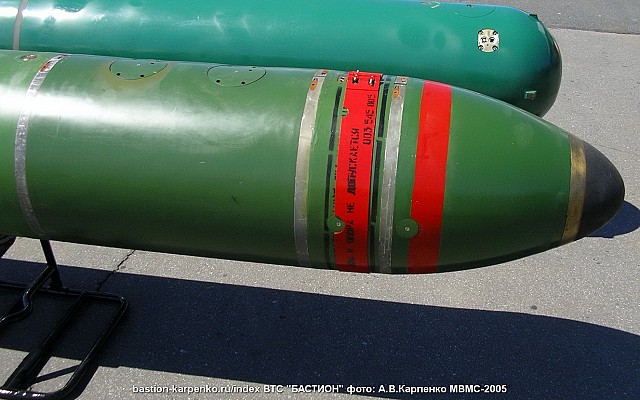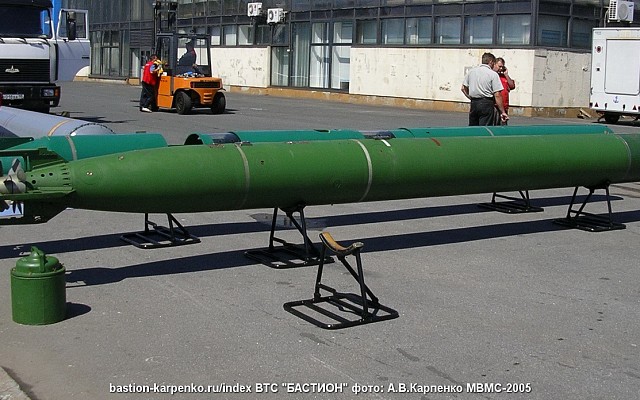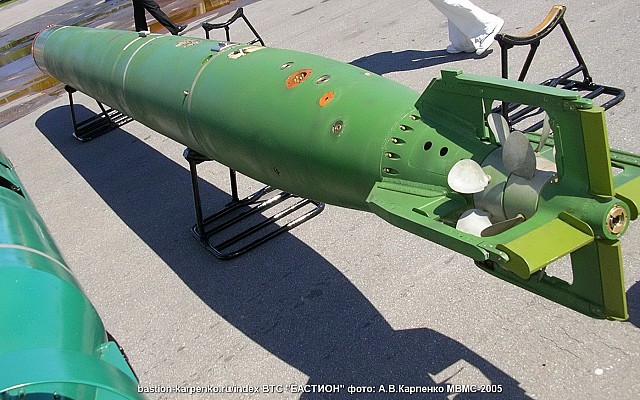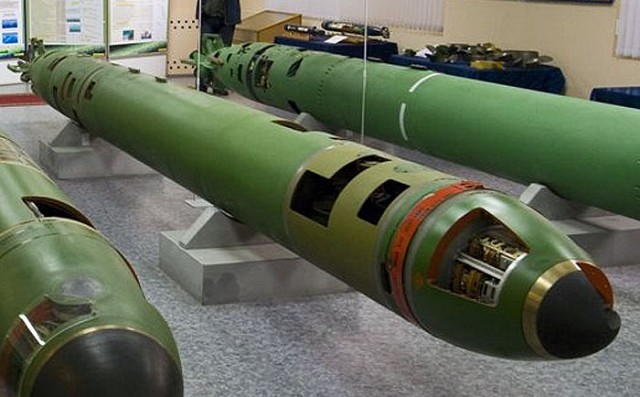TEST-71
Overview
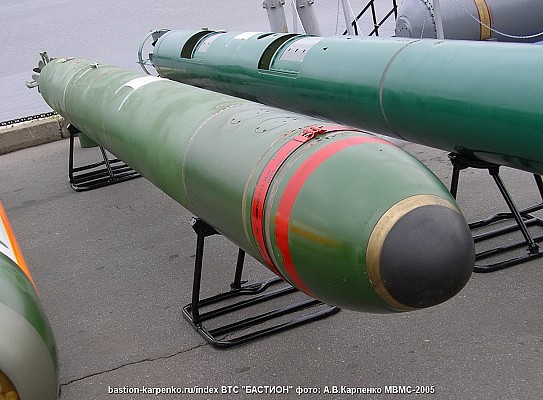
TEST-71ME-NK
Frontal view of TEST-71ME-NK torpedo on display in 2005.
Source: A.V. Karpenko -
© Copyright lies with original owner
Soviet Union - TsNII-173
Russia - Dvigatel
Delfin-2 (research program)
ТЭСТ-71 (cyrillic)
Russia
China
Description
Introduction
The TEST-71 is a late Cold War era heavyweight torpedo of Soviet origin. The TEST-71 is the second wire guided torpedo in Soviet service. Whereas the TEST-68 was based on the SET-53M torpedo the TEST-71 is based on the SET-65M torpedo.
Design
The TEST-71 can simply be described as a SET-65M torpedo with added wire guidance capability. The onboard guidance was modified to accept inputs via the wire, which is held in a canister a the rear. The electric motor has two running speed and is powered by silver-zinc batteries.
Guidance
The TEST-71 used the Sapfir acoustic sensor introduced on the SET-65M torpedo. This was augmented wire guidance provided by the KTU-71 telecontrol system. Total wire length is 20 km, with 15 km on the torpedo and 5 km on the vessel. The wire guidance can adjust the direction of the torpedo in the horizontal plane, but does not adjust the running depth. The wire guidance is used only for steering the torpedo, the torpedo does not send any information towards the submarine. From the TEST-71M onward all models use the KTU-81 telecontrol system. Furthermore, the Keramika acoustic sensor was introduced, which has a much better performance in shallow water and below ice. The Sapfir has an 800 m sensor range in active mode, the Keramika doubles this to 1.5 km.
Firepower
The TEST-71 has a 205 kg warhead which is effective against submarines and all but the largest surface vessels. It can operate on two modes, which are 40 knots and about 25 knots. At the slower speed setting it has a longer effective range and the wire is less likely to snap. Effective range is about 20 km.
Platforms
TEST-71 torpedo was tested on Project 641 (Foxtrot) and TEST-71M was tested on both Project 641B Som (NATO: Tango) and Project 877 Paltus (NATO: Kilo) class submarines. Although tested on Project 641 and 641B, it would seem that TEST-71 torpedoes were only in operational use on Project 877 Paltus and various nuclear powered attack submarines. These include the Project 671 (NATO: Victor) series and
Users
The TEST-71 was the standard wire guided torpedo for soviet diesel and nuclear attack submarines in the later stages of the Cold War. It remains in service today, both on submarines and large surface vessels. Various nations obtained the export models of the TEST-71 for use on Project 877 and 636 diesel electric submarines.
Variants
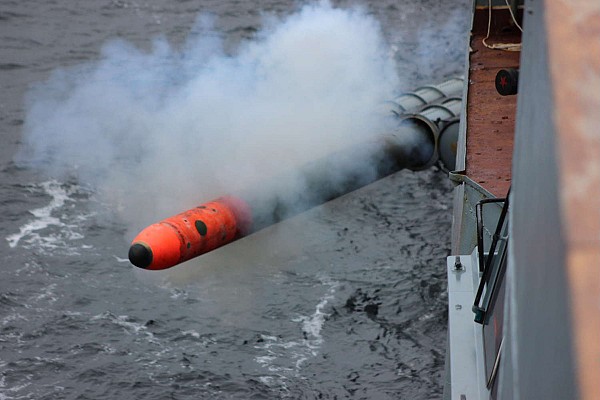
TEST-71M-NK
Russian navy practice shot of a TEST-71M-NK torpedo being launched during an exercise in 2017
Source: www.mil.ru -
© CC BY 4.0
List of TEST-71 variants
Details
Media
Platforms
Note: incomplete list
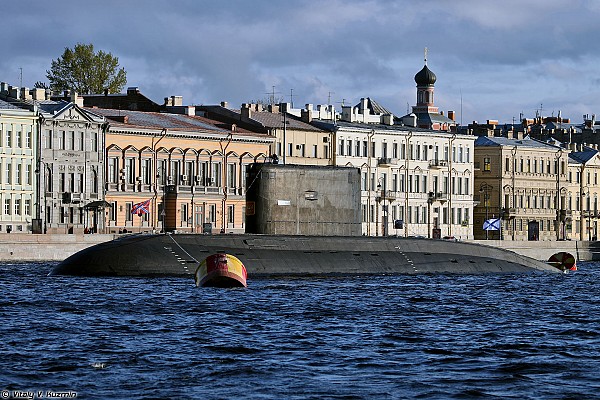
Project 877 Paltus class
Soviet diesel-electric attack submarine. Known by NATO as Kilo class. Used with TEST-71 torpedoes by the Soviet navy and exported to several nations.
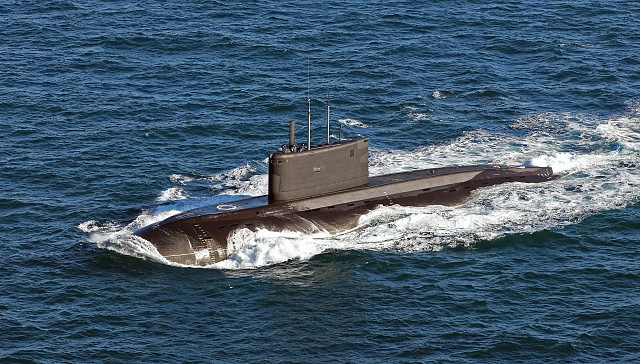
Project 636 Varshavyanka class
Russian diesel-electric attack submarine. Known by NATO as Improved Kilo class. Used with several variant of the TEST-71M torpedo, including for export sales.
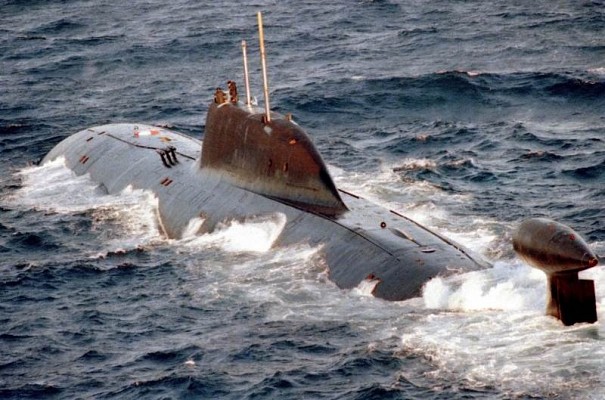
Project 971 Shchuka-B class
Soviet nuclear powered attack submarine. Known as Akula by NATO. Used with TEST-71M and TEST-71MK in Soviet and Russian service.
